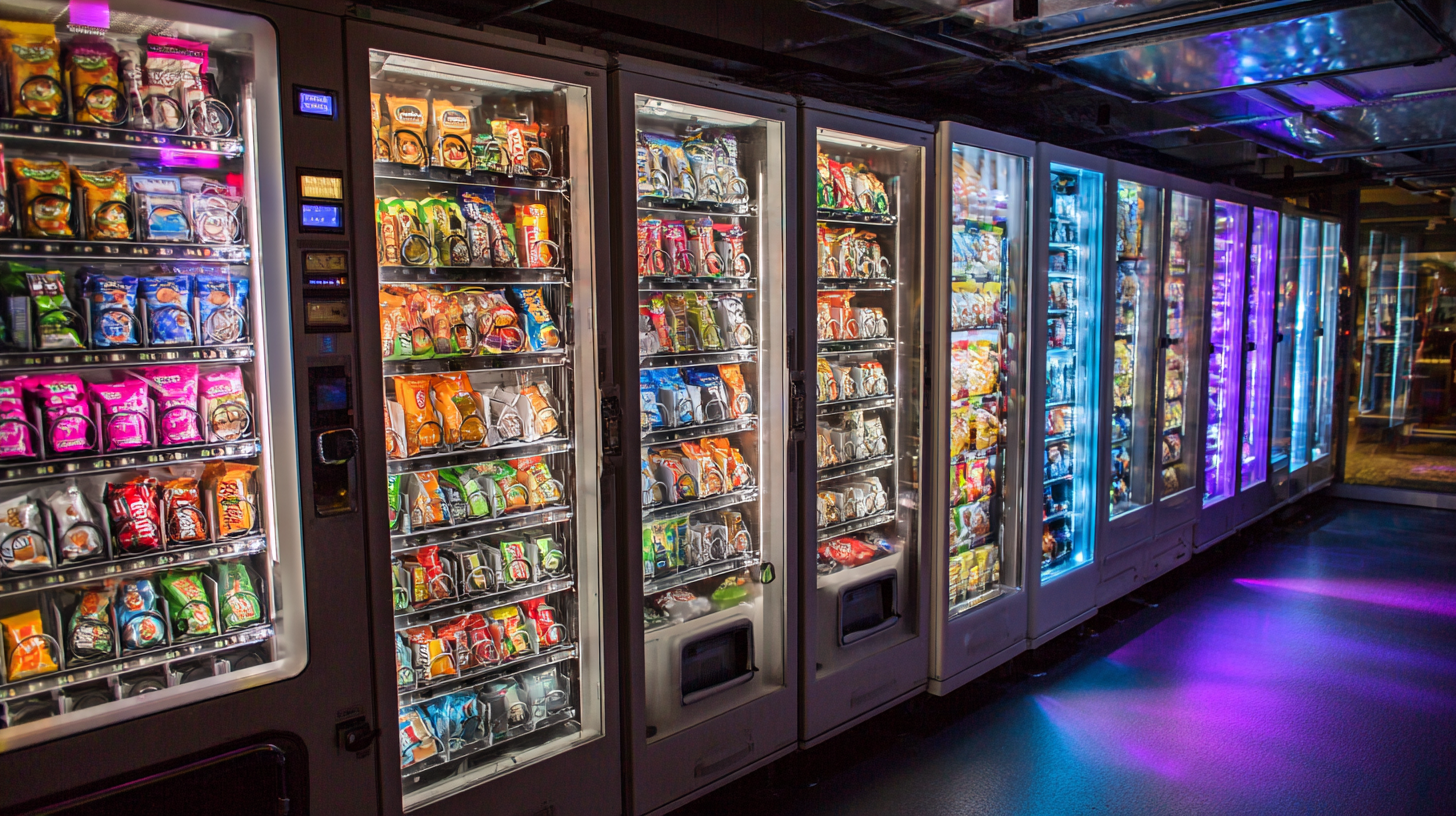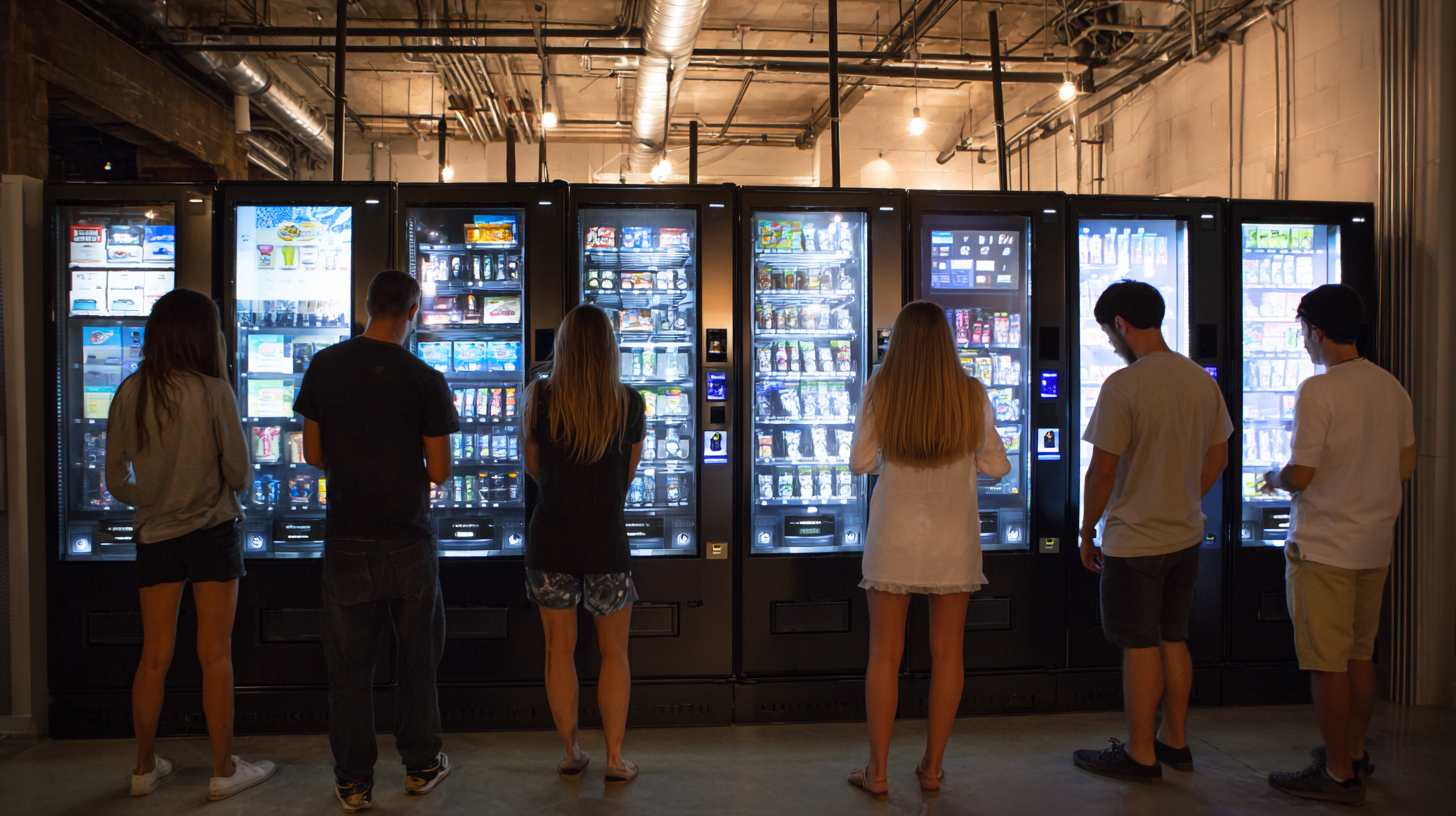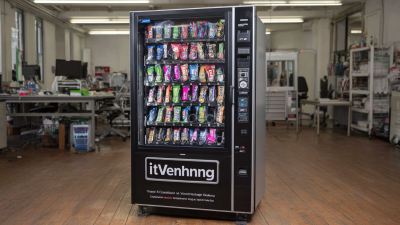Exploring the Future of Vending Machine Services: Innovations Transforming Convenience
As the world continues to embrace rapid technological advancements, the landscape of Vending Machine Services is undergoing a remarkable transformation. This evolution is fueled by the integration of digital solutions and innovative functionalities that enhance consumer experience and operational efficiency. In an era where convenience is paramount, vending machines are now being equipped with smart features such as cashless payment options, real-time inventory tracking, and personalized product recommendations. These innovations not only cater to the changing preferences of consumers but also present new business opportunities for operators looking to stay competitive. By exploring the future of Vending Machine Services through the lens of digital and BEST (Building Efficient Sustainable Technologies) principles, we can gain insights into how these machines are not just vending products but are becoming integral components of modern retail strategies, redefining convenience and accessibility in our daily lives.

Revolutionizing Vending Machines: The Role of Smart Technology in Service Enhancement
The advent of smart technology is profoundly transforming vending machine services, ushering in an era of enhanced convenience and user engagement. By integrating internet connectivity and advanced software, modern vending machines can offer personalized experiences tailored to individual preferences. For example, machines equipped with AI algorithms can analyze customer purchasing patterns to suggest items, optimize inventory, and improve overall product offerings. This level of personalization not only enriches the consumer experience but also increases sales efficiency for operators.
Moreover, smart vending machines are incorporating touchless payment solutions, further streamlining the purchasing process. Consumers can now make transactions using mobile wallets or contactless cards, which minimizes physical contact and caters to health-conscious users. Additionally, real-time inventory management allows operators to monitor stock levels and machine performance remotely, reducing downtime and ensuring that popular items are always available. These innovations highlight the pivotal role of smart technology in revolutionizing vending services, making them more accessible, efficient, and tailored to the needs of modern consumers.
The Rise of Contactless Payments: Boosting User Experience in Vending Services
 The evolution of vending machine services has been notably influenced by advancements in technology, particularly with the rise of contactless payments. This innovation has transformed the way consumers interact with vending machines, allowing for a seamless and efficient purchasing experience. With the implementation of Near Field Communication (NFC) and mobile wallet options, users can make transactions simply by tapping their smartphones or contactless cards, reducing the need for physical cash and enhancing convenience.
The evolution of vending machine services has been notably influenced by advancements in technology, particularly with the rise of contactless payments. This innovation has transformed the way consumers interact with vending machines, allowing for a seamless and efficient purchasing experience. With the implementation of Near Field Communication (NFC) and mobile wallet options, users can make transactions simply by tapping their smartphones or contactless cards, reducing the need for physical cash and enhancing convenience.
Moreover, the emphasis on contactless payments has significantly improved the overall user experience. In a fast-paced world, consumers value efficiency and speed, and contactless technology meets these demands perfectly. Not only does it minimize wait times, but it also promotes hygiene, which has become increasingly important in the wake of health concerns. As more vending machines adopt these payment methods, they become more appealing to tech-savvy customers who expect modern solutions and effortless interactions in all aspects of their lives.
This shift not only boosts user satisfaction but also positions vending machine services as a competitive player in the retail landscape.
AI and Data Analytics: Personalizing Vending Offerings for Consumers
The vending machine industry is experiencing a transformative shift fueled by advancements in artificial intelligence (AI) and data analytics. By 2026, the smart vending machine market is projected to reach a size of $2.09 billion, with expectations for enormous growth leading to an estimated $15.9 billion by 2035, reflecting a remarkable compound annual growth rate (CAGR) of 14.21%. This thriving sector is increasingly harnessing AI to personalize offerings based on consumer preferences and purchasing behaviors, allowing for a more tailored shopping experience that enhances convenience.
As businesses adapt to evolving consumer demands, the integration of data analytics is essential for identifying trends and optimizing inventory in vending machines. For instance, the global retail automation market is anticipated to soar from $24.36 billion in 2024 to approximately $64.09 billion by 2032, showcasing the growing reliance on automated solutions. Such innovations not only streamline operations but also elevate the customer experience by providing relevant product recommendations, as highlighted by industry leaders advocating for a new era of highly personalized retail services. The convergence of AI and retail automation is set to redefine how consumers interact with vending machines, making convenience smarter and more interactive than ever before.
Sustainability in Vending Machines: Eco-Friendly Innovations and Practices
As the demand for eco-friendly practices continues to rise, the vending machine industry is embracing sustainability like never before. Notably, the introduction of reverse vending machines has emerged as a key innovation. These machines not only facilitate recycling but also incentivize users by rewarding them with cash for their efforts. This transformation is particularly evident in university settings, where students are engaging more actively in recycling initiatives, promoting a culture of sustainability.
In addition to reverse vending machines, other innovations are reshaping the sector. Companies are exploring the use of biodegradable materials and smart technology to enhance their operations. For instance, vending machines that utilize compostable materials can significantly reduce plastic waste. As market research predicts the vending machine market could reach USD 41.4 billion by 2033, it’s clear that eco-friendly innovations will play a vital role in driving this growth.
Tips:
- Look for vending machines that offer recycling rewards to encourage sustainable practices in your community.
- Support vending operators that use eco-friendly packaging and materials to help reduce environmental impact.
- Stay informed about new technologies in the vending industry that promote sustainability and check local initiatives that support waste reduction.

The Integration of IoT: Creating a Connected Vending Experience for Users
The integration of the Internet of Things (IoT) into vending machine services represents a significant leap towards enhancing user convenience and engagement. By embedding IoT technology, vending machines can connect to the internet to monitor inventory levels in real-time, allowing operators to restock items proactively and avoid stockouts. Users can benefit from this technology by receiving notifications on their smartphones about the availability of their favorite products, making the whole experience more seamless.
Moreover, IoT integration enables sophisticated payment systems and personalized marketing strategies. Through data collection, these smart machines can analyze consumer behavior and preferences, allowing operators to customize promotions directly to users’ mobile devices. This not only enhances the likelihood of purchase but also builds a stronger connection between consumers and brands. As vending machines evolve into connected devices, they promise to transform traditional buying experiences into dynamic interactions that are both more efficient and consumer-centric.
Exploring the Future of Vending Machine Services: Innovations Transforming Convenience
| Feature | Description | Impact on User Experience | Integration Level |
|---|---|---|---|
| Smart Inventory Management | Real-time tracking of stock levels and automatic alerts for restocking. | Reduces wait times and ensures popular items are always available. | High |
| Mobile Payments | Supports cashless transactions via smartphones and digital wallets. | Enhances convenience and speeds up the purchasing process. | Medium |
| User Customization | Allows users to personalize their purchasing experience based on preferences. | Increases customer satisfaction and loyalty. | High |
| Data Analytics | Analyzes purchasing patterns for inventory and marketing strategies. | Improves product offerings and promotional effectiveness. | Medium |
| Remote Diagnostics | Continuous monitoring of machine health and performance. | Minimizes downtime and maintenance costs. | High |
Related Posts
-

Transforming Workspaces: The Ultimate 10 Best IT Vending Machine Solutions for Global Buyers
-

Vending Services Unveiled: A Comprehensive Analysis of Global Supply Options
-

Maximize Profitability with Snack Machine Maintenance Benefits and 7 Essential Cost Saving Tips
-

5 Proven Strategies to Optimize Your Vending Services for Global Buyers
-

Innovative Vending Machine Solutions Transforming Global Procurement Strategies
-

Emerging Technologies and Innovative Approaches in Vending Solutions for 2025
